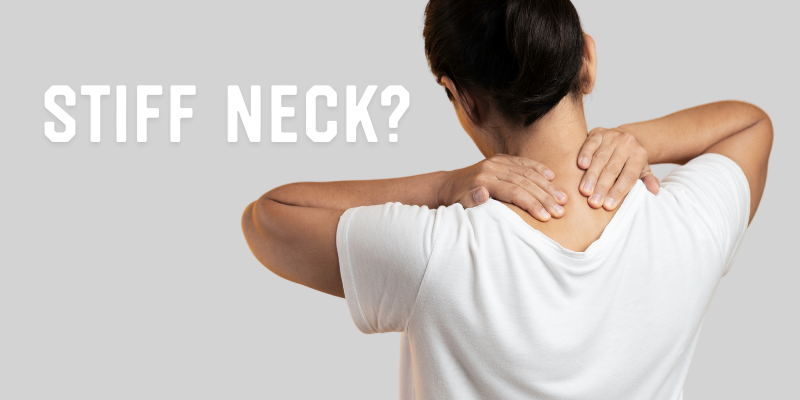By Dr. Patrick Payne
QubeCore Sports & Rehab Chiropractor
If your neck sometimes feels stiff, sore, or achy, you’re not alone. Neck discomfort is incredibly common in adults. One of the main contributors is cervical spondylosis – the medical term for age-related degenerative changes in the neck joints.
It’s important to understand that not all changes seen on X-rays or scans are painful. Many people have degenerative changes in the cervical spine with no symptoms, while others develop stiffness, soreness, or discomfort that affects daily life.
What Is Cervical Spondylosis?
Cervical spondylosis occurs when the vertebrae, discs, and small joints (facet joints) in the neck gradually degenerate. When these changes irritate the joints, ligaments, or surrounding soft tissue, it can lead to symptomatic cervical arthritis— stiffness, soreness, and occasional discomfort with movement.
Common Signs and Symptoms
People with symptomatic cervical spondylosis often notice:
- Neck stiffness, especially in the morning or after activity
- Aching or soreness that may radiate slightly into the shoulders or upper back
- Reduced comfort with prolonged activities or turning the head
- Mild tension in surrounding muscles
It’s worth noting that many adults have visible changes on imaging but never develop symptoms. The difference is whether the joints and surrounding tissues are irritated enough to produce discomfort.
Why It Happens
The cervical spine supports the head, which weighs approximately 10–12 pounds, and allows a wide range of motion – rotation, flexion, and extension. Over time, normal use, repetitive motion, previous injuries, and genetics can lead to wear in the discs and facet joints. Symptomatic arthritis develops when the body responds to these changes with stiffness, soreness, or discomfort.
Managing Symptomatic Cervical Spondylosis
- Gentle Movement and Mobility
Controlled movement helps maintain joint mobility and reduces stiffness. Slow neck rotations, tilts, and extensions throughout the day can improve comfort. - Strengthening Key Muscles
Strong neck, shoulder, and upper back muscles support the spine and reduce joint stress. Exercises like chin tucks, scapular squeezes, and gentle rows are particularly effective. - Manual Therapy
Chiropractic adjustments, soft tissue therapy, and gentle joint mobilization can relieve tension and improve range of motion. While these treatments don’t reverse arthritis, they make symptoms more manageable and enhance the effects of exercise. - Activity Considerations
Breaks from repetitive tasks, pacing activities, and gradually increasing movement intensity can prevent stiffness from worsening.
Takeaway
Cervical spondylosis is a normal, age-related process. Experiencing stiffness or soreness doesn’t mean you’re “damaged.” Most people can maintain a functional, comfortable neck with movement, strengthening, manual therapy, and thoughtful activity management. At QubeCore, we help patients manage neck discomfort, improve mobility, and restore function. Whether your stiffness is new or longstanding, we can help you move, feel better, and stay active.
QubeCore Sports & Rehab offers Chiropractic services in North Vancouver for a wide range of concerns. To book your appointment with Dr. Patrick Payne, call 604.210.2274 or simply book online by clicking HERE.
References
- Matsumoto M, et al. “Age-related changes of the cervical spine: radiographic analysis in asymptomatic subjects.” Spine (Phila Pa 1976). 2010;35(5):E147–E152.
- Binder AI. “Cervical spondylosis and neck pain.” 2007;334:527–531.
- Korthals-de Bos IBC, et al. “Conservative treatments for neck pain: a systematic review.” 2003;28(15):1559–1573.
- Falla D, et al. “Neck muscle training for chronic neck pain: evidence and clinical application.” J Orthop Sports Phys Ther. 2012;42(6):558–569.
- Gore DR, et al. “Cervical spondylosis: prevalence, imaging findings, and clinical relevance.” Spine J.2011;11(11):1051–1057.
